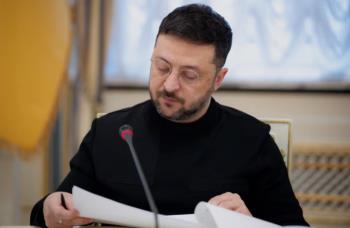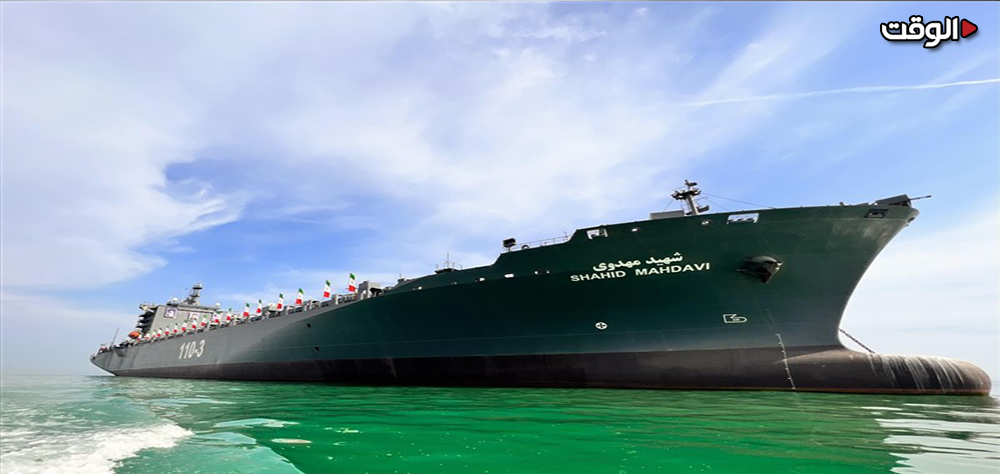The enhanced capabilities of the naval vessels belonging to the Islamic Revolutionary Guard Corps (IRGC) are poised to bolster Iran's military strength and fortify its deterrence capabilities. Additionally, they are likely to facilitate a significant shift in regional dynamics.
ALWAGHT- Less than a year has passed since the completion of the construction of the Iranian warship "Shahid Mahdavi," and on Tuesday, the 13th of February 2024, images released by the naval forces of the Islamic Revolutionary Guard Corps (IRGC) showed the launch of a ballistic missile from the deck of this warship.
According to reports, the ballistic missile launched from this vessel reportedly has a range of 1700 kilometers. News sources indicate that the oceanic patrol vessel Shahid Mahdavi and 95 missile-carrying vessels, with missile ranges varying between 10 to 180 kilometers, have been integrated into the naval fleet of the IRGC. Originally multifunctional, these vessels have been upgraded from static missile launchers to mobile missile launchers, significantly extending their range compared to other missile vessels.
The new capabilities of the IRGC's naval vessels are likely to bolster Iran's military strength and deterrence capabilities significantly, potentially reshaping regional dynamics. With the activation of this warship equipped to launch long-range ballistic missiles and carry drones, its operational scope extends from land to sea.
Major General Hossein Salami, the IRGC's commander-in-chief, emphasized that this advancement enhances Iran's naval power and global presence, asserting that there is no safe haven for any threat to Iran when missiles can be launched from its oceanic vessels. Rear Admiral Tangsiri, the IRGC Navy commander, also disclosed the installation of domestically produced 2000-kilometer-range cruise missiles named "Qadr-474" on the Shahid Mahdavi vessel.
It's important to acknowledge that launching long-range ballistic missiles from a ship demands precise technical expertise in aerospace and shipbuilding to withstand the considerable energy and vibrations exerted on the ship's hull during the launch. However, it should be noted that the timing of the unveiling of this oceanic and multi-purpose logistics vessel could necessarily be linked to recent regional developments or escalating tensions between Tehran and Washington.
In recent years, Iran has been focused on bolstering its naval capabilities to extend its presence in regional waters. Notably, Iran's naval group 86 of the Islamic Republic Army undertook an unprecedented operation, completing a circumnavigation of the globe and returning to the country's coastal waters after 8 months of navigation in May.
In contrast, the strategic emphasis on the navy has prompted endeavors to deploy large ships alongside fast boats, patrol boats, and lighter vessels. In recent years, there has been a notable conversion of several massive ships into military vessels like the Makran, Shahid Mahdavi, and Shahid Roudaki.
Before the activation of the logistics vessel Shahid Mahdavi, The Associated Press reported that the construction of the sizable vessel would furnish the IRGC with a significant naval base capable of deploying small fast boats to counter the US and its allied naval forces in the region.
Simulating an attack on Israel during the unveiling of the Iranian vessel
However, the recent notable coordination among the Revolutionary Guards in the missile sector, amid the crisis in Gaza and the escalating threats and retaliatory strikes between the Resistance Front and the American-Zionist Front, has not gone unnoticed by international observers. The simulation of extensive missile attacks on critical military installations in Israel, such as the Dimona nuclear reactor or the Palmachim airbase – the primary storage site for F-35 fighter jets of the Zionist army – appears to have conveyed a clear message to the bellicose Zionists.
One implication of this maneuver is that in the event of military conflict initiated by the Zionists, who perceive themselves as the predominant air power in the region, they will not have the opportunity to employ this power for aggressive actions against the Islamic Republic. Iran's acquisition of technology to manufacture supersonic missiles like Fattah-1 and Fattah-2 has enabled the reduction of the time required to destroy targets in occupied territories to less than 8 minutes.
Al Jazeera also covered the topic of this Iranian vessel in a report, stating: "This display is interpreted as a direct message to Israel and the United States, especially as tensions escalate across the region due to the Gaza conflict. The Iranian Islamic Revolutionary Guard Corps conducted a simulated attack on a significant Israeli airbase, showcasing its maritime capabilities. Images aired on state television on Tuesday depicted the Revolutionary Guard Corps firing various munitions from both ships and submarines. Given the heightened conflict between Israel and Gaza and the increased tensions in the region overall, this demonstration appears to transfer a clear message."
The images released of this logistics ship have once again fueled the propaganda of media outlets associated with the United States. They have gone as far as claiming that the unveiling of the Shahid Mahdavi ship by Iran is hazardous, all while disregarding Washington's destabilizing actions in the region, recent provocations, ongoing extensive attacks on resistance groups' positions, and the numerous US bases in countries bordering the Persian Gulf.
Voice of America also reported: "Concurrently with Iran's ongoing support for resistance groups in the region and their endorsement of their hazardous activities, the Revolutionary Guards declared on Tuesday that they have, for the first time, launched long-range ballistic missiles from a vessel in the Sea of Oman.
The official commencement of operations for this logistics vessel will bolster the combat capabilities of the IRGC Navy across various military domains. It empowers Iran to conduct its missions in international waters with increased potency and a wider operational range. Undoubtedly, the augmentation of deterrence capabilities and control over territorial waters will contribute to securing shipping routes and facilitating international trade through open waters."



























